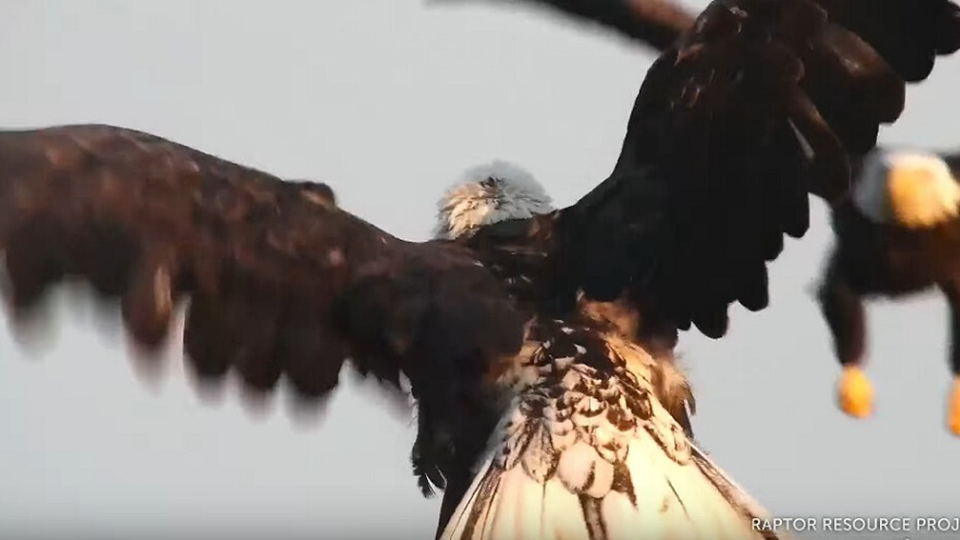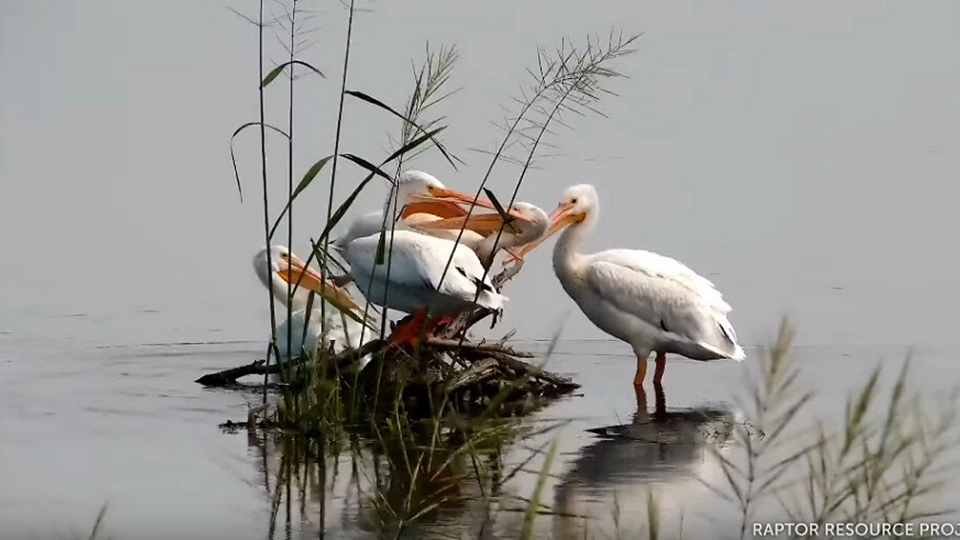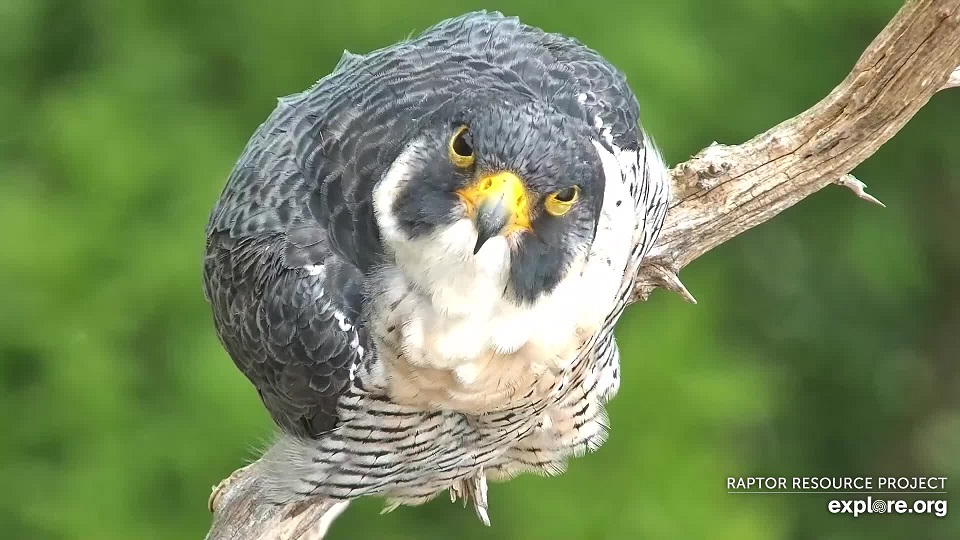Happy Flyway Fri-yay! We have videos from the Flyway and GSB, plus a few interesting odds and ends for everyone to enjoy. Thanks so much for watching, sharing, learning, and especially for caring! While our eagle cams will be down until early October, our Flyway and GSB cams are live and catching some lovely and fascinating interactions. We hope to see you at Eagle College! https://www.raptorresource.org/birdcams/flyway-cam/ and https://www.raptorresource.org/birdcams/eagle-valley/.
Mississippi Flyway

September 2, 2021: An eagle interaction on the Mississippi Flyway.
September 2, 2021: GBH Upright and Spread Wing Display – https://youtu.be/KHl0HH47T94. What are these herons doing, and why do they appear to be chasing each other? This is the Upright and Spread Wing display, one of roughly 49 display behaviors listed by the Heron Conservation Group. As we see in the video, two herons approach one another on their feeding grounds. They spread their wings, fan their tails, droop and spread their wings, extend their necks and heads high over their backs, and become more vertical as the display continues. While USW usually occurs between two herons, it has been observed between herons and gulls, herons and great egrets, and herons and people.
Why do herons display this way?
Herons have developed a wonderful and complex display language to indicate status, health, desire, territoriality , and aggression, just to name a few – in other words, to communicate their emotional state and intent to other herons (and some confused non-herons). The two herons in this video appear to be defining the edges of their foraging patches, displaying to one another until the heron at left chases the heron at right away. To learn more about the language that herons use to communicate with one another, follow this link: https://www.heronconservation.org/media/resources/Heron-Behavior-Terminology.pdf.
September 2, 2021: Lone Eagle – https://youtu.be/2fNu9POhl3A. Exactly as the title says, this young adult eagle is lovely in the setting sun. Check 52 seconds and slow down the feed for an incredible interaction with another eagle.

August 31, 2021: A pelican spa!
August 31, 2021: Pelican preening extreme close-up edition – Pelican Preening, Extreme Closeup Edition – https://youtu.be/18zmNAjw754. I have wondered how pelicans preen with their giant schnozzes! This video shows the incredible delicacy with which pelicans can maneuver the spade-like tips of their beaks, digging deep under their feathers to straighten feathers and remove dirt and parasites. I loved watching this long and super-relaxing spa-time. Check 9:20 for what might be a crop-drop and marvel at the size and stretchability of a pelican’s beak!
August 31, 2021: Eagle call, flyby, stretching – https://youtu.be/Pep_tNeuSXg. A beautiful eagle sits on a snag. I see a couple of dark spots on its head, so this isn’t one of the locals. It could be the same eagle we saw on August 22nd based on what we can see of its head and markings.
Great Spirit Bluff

September 2, 2021: Newman at GSB
September 2, 2021: Close-up of Newman – https://youtu.be/x0YsAOjMFZ0. Wow! The camera operator gives us every detail of Newman’s face and feathers, including his nose cone baffles, mallar stripe, enormous eyes, and sharply curved beak. Falcon fans, this #FridayFalcon is for you!
Newman and Zooey are still on site, but Chance appears to have left. It isn’t uncommon for fledged falcons to disperse this time of the year. While falcons aren’t social like eagles, there is some evidence that dispersing young falcons can form large aggregations that perch and hunt near one another. https://bioone.org/journals/journal-of-raptor-research/volume-52/issue-4/JRR-18-13.1/A-Large-Aggregation-of-50-Peregrine-Falcons-Falco-peregrinus-During/10.3356/JRR-18-13.1.short. Given how close La Crosse and other peregrine territories are, I’d be curious to know if this is happening here.
Odds and Ends
We know that waterfowl who breed in the north migrate south for the winter. But did you know that many waterfowl (and some other species) undertake a summer molt migration? Breeding waterfowl molt while raising young, but non-breeders (and breeding drakes that don’t help raise young) often fly north to molting grounds. https://www.duluthnewstribune.com/news/science-and-nature/6528806-Canada-geese-molt-migration-heading-north (requires an account) or https://www.themeateater.com/hunt/waterfowl/the-truth-about-the-molt-migration (this is a website for hunters).
Congress calls for lasting changes to the migratory bird treaty act. You can follow the bill and see who supports it here: https://www.govtrack.us/congress/bills/117/hr4833. I got curious about what bills contain the phrase ‘Migratory Bird Treaty Act’, so I searched with that keyword. I found more than I would expect (note: not all of these are relevant): https://www.govtrack.us/congress/bills/browse?text=migratory%20bird%20treaty%20act.
Tiny Frogs and Giant Spiders best of friends! https://blogs.scientificamerican.com/tetrapod-zoology/tiny-frogs-and-giant-spiders-best-of-friends/. A cool story from Scientific American and totally my kind of clickbait!
 The Raptor Resource Project
The Raptor Resource Project The Raptor Resource Project
The Raptor Resource Project